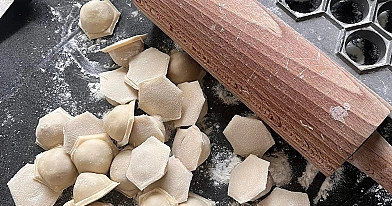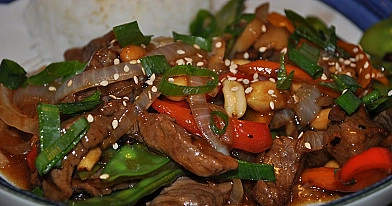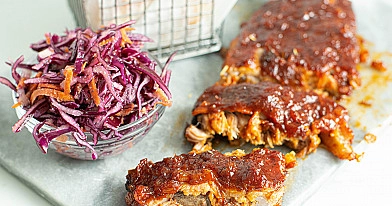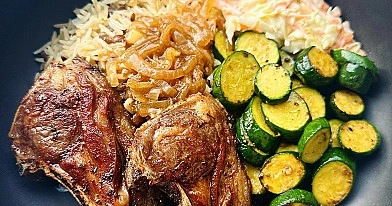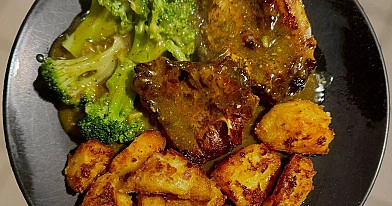
Tamarind-marinated bavette steak by Nigella
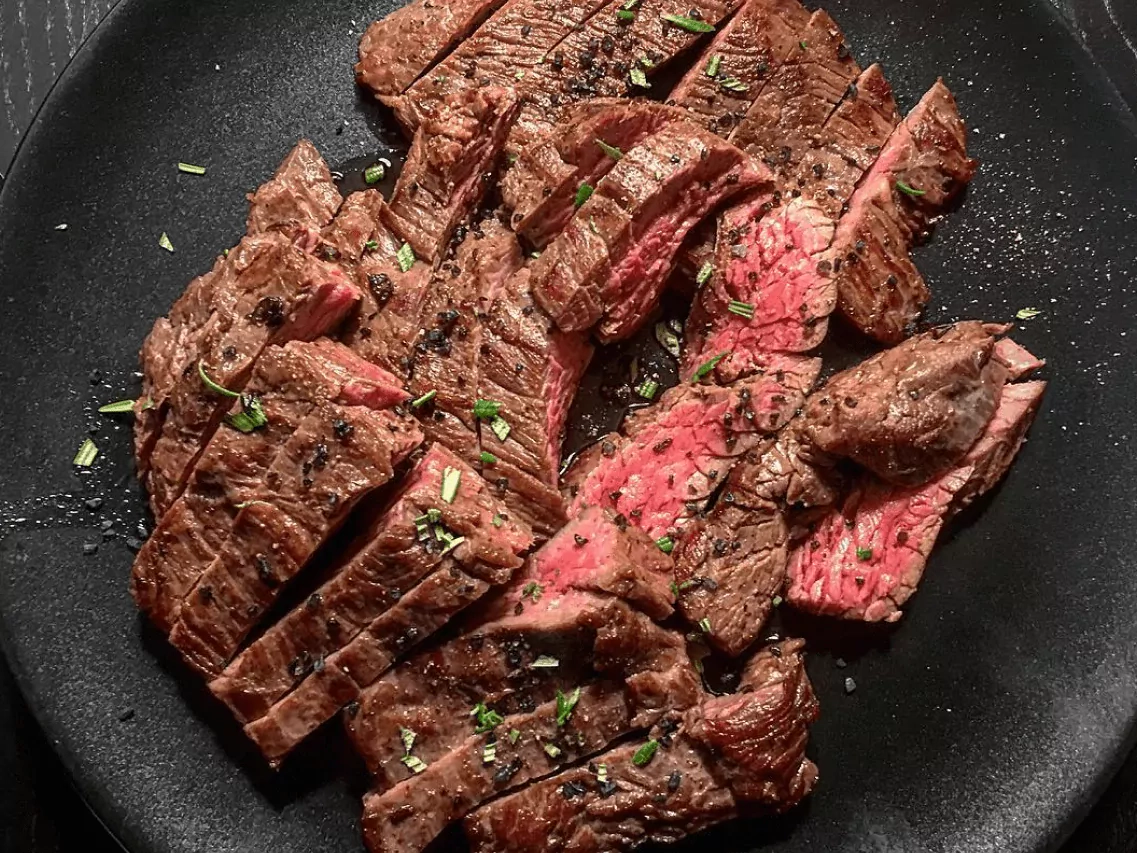
Skirt or flank steak is popular in the United States and France, but it is rarely eaten in the United Kingdom. This is insane because it is so much cheaper and more flavorful than any other type of steak. I believe what has turned people off in the past is that it has been cooked in low and slow braises in Britain, which turns it into shoe leather. Bavette is the external part of the skirt (onglet is the internal connecting tissue), and all you need to do to cook it is "sear the hell out of it and serve it rare," as my butcher puts it. I find that 2 minutes per side on a very hot, ridged griddle is ideal, but this is only for those who like their steak blue.
Ingredients
- Tamarind paste (50g/134oz)
- 4 tablespoons soy sauce
- 4 tablespoons hot water from a freshly boiled kettle
- 2 tablespoons sunflower oil
- 1 tablespoon runny honey
- 750 grams/1lb 10oz (whole piece) steak boeuf bavette
- 1. In the smallest saucepan you have, combine the tamarind paste, soy sauce, and hot water and stir to dissolve the tamarind.
- 2. When it's as smooth as you think it can be - the tamarind paste I use says it's stone-free, but I find the odd one and don't bother removing it - transfer to a bowl or jug, whisk in the oil and honey, and set aside to cool.
- 3. Do not use until it is completely cold.
- 4. Place the bavette steak in a resealable freezer bag, pour in the cold marinade, and squish it around so that the thin steak is covered on both sides, then seal, place on a plate, and chill overnight or for 1 day.
- 5. Return it to room temperature before preparing a large piece of kitchen foil and heating a ridged griddle until very, very hot.
- 6. Remove the steak from the marinade, allowing any excess to drip back into the bag, and then place it on the griddle for 2 minutes per side.
- 7. Transfer the steak to the piece of foil immediately (I use tongs for this) and make a tightly sealed but baggy parcel, and let the meat rest for 5 minutes on a chopping board or any surface that is not too cold.
- 8. Unwrap the foil, place the steak on a cutting board, and carve thin slices against the grain.
- 9. Recipe Suggestions: Another important consideration is how you carve it: it must be sliced against the grain. That is true for all steak, but if you disobey with a cut like bavette, it will be inedibly chewy. Fortunately, the grain is very distinct, making it simple to identify and then cut across.
- 10. You are not required to purchase the entire piece. I don't like cooking individual cut steaks because it's all about the fine slicing in my opinion, but a 500g piece will feed 4 and is the size I usually go for, cooking it for the same amount of time as overleaf.
- 11. The tamarind and soy marinade not only tenderizes the meat but also adds a wonderful tanginess (I have a sour tooth). I keep Thai tamarind paste, which is almost like a brick, in my fridge, which is why I proceed as described below. If you're using jarred tamarind paste (which tends to be runny), use 5 tablespoons and combine it with the rest of the marinade ingredients without cooking or adding water. Both are acceptable, but the genuine article is superior and less expensive.
- 12. I serve this thinly sliced, as if it were a beef joint, but it also makes fantastic beef tacos and is delicious cold, stuffed into a baguette or tossed into a salad, so leftovers are a real treat.
- 13. Note: I found one more recipe on YouTube that our family really loved. Attached it for you as well, if you would like to try it.
Recipe Directions

